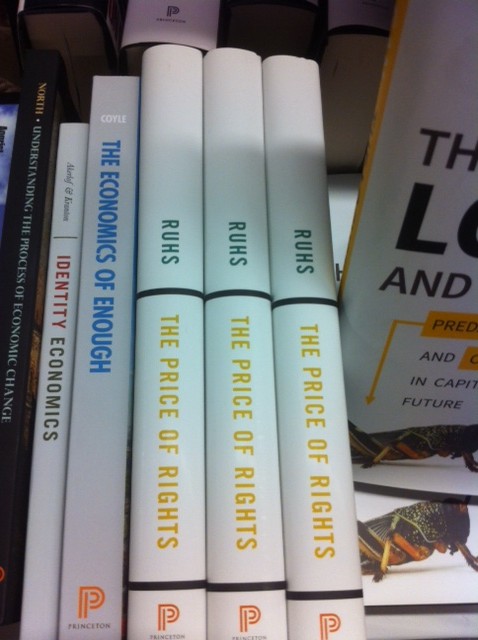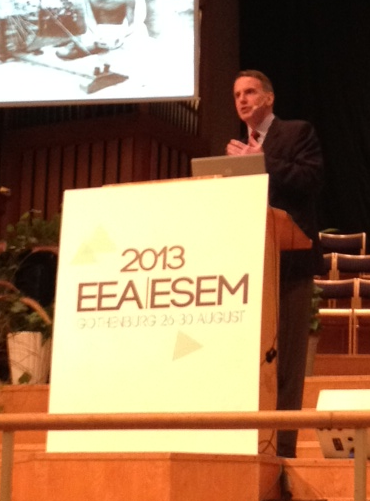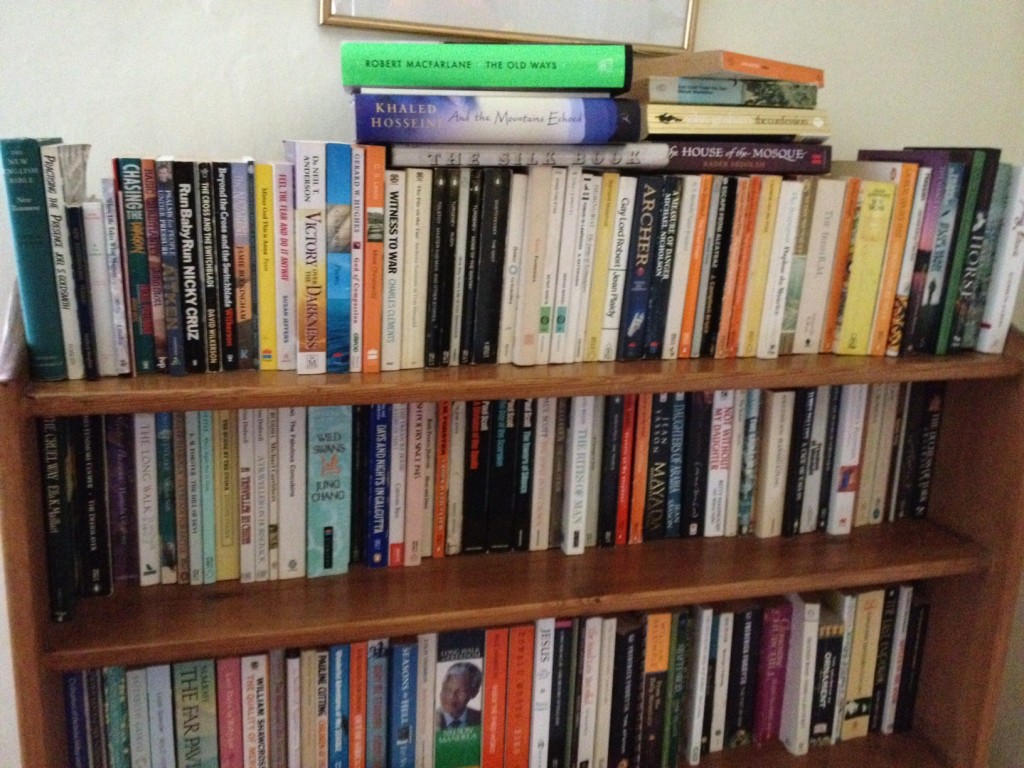My friend and colleague Martin Ruhs and I spent five years together on the Migration Advisory Committee. He sent this uplifting photo from the American Political Science Association meetings in Chicago:

My [amazon_link id=”0691145180″ target=”_blank” ]The Economics of Enough [/amazon_link]has been out for a good while, and I’m soon due to be proofreading my next one. But Martin’s book [amazon_link id=”0691132917″ target=”_blank” ]The Price of Rights: Regulating International Labor Migration[/amazon_link] is brand new. I think it will be a must for people interested in the migration issue. It looks at the restrictions high-income countries place on inward migration and the trade-offs between migrant workers’ labour rights and their access to labour markets.
[amazon_image id=”0691132917″ link=”true” target=”_blank” size=”medium” ]The Price of Rights: Regulating International Labor Migration[/amazon_image]
I’m going to read it alongside another new book in my in-pile, on an important historical episode in the history of international migration, when the scale of cross-border labour movements rivalled those in the current episode of globalization, Drew Keeling’s [amazon_link id=”3034011520″ target=”_blank” ]The Business of Transatlantic Migration between Europe and the United States, 1900-1914.[/amazon_link] Intriguingly, it promises to look at the role mass migration played in the development of the travel business.
[amazon_image id=”3034011520″ link=”true” target=”_blank” size=”medium” ]The Business of Transatlantic Migration between Europe and the United States, 1900-1914: Mass migration as a transnational business in long distance travel[/amazon_image]
There have been quite a few books on migration recently. One well worth reading is [amazon_link id=”069115631X” target=”_blank” ]Exceptional People: How Migration Shaped Our World and Will Define Our Future[/amazon_link] by Ian Goldin et al.
[amazon_image id=”069115631X” link=”true” target=”_blank” size=”medium” ]Exceptional People: How Migration Shaped Our World and Will Define Our Future[/amazon_image]
One I must also read is Paul Collier’s [amazon_link id=”0195398653″ target=”_blank” ]Exodus: How Migration is Changing Our World[/amazon_link] – Dalibor Rohac reviews it here, very favourably albeit with a slight caveat about wishing it had looked more at the evidence on the untapped economic gains from less restricted migration.
[amazon_image id=”0195398653″ link=”true” target=”_blank” size=”medium” ]Exodus: How Migration Is Changing Our World[/amazon_image]
I haven’t bothered with David Goodhart’s [amazon_link id=”1843548054″ target=”_blank” ]The British Dream[/amazon_link] – it’s evidently political polemic rather than social science. This is very nerdy of me, but the OECD’s annual [amazon_link id=”9264200150″ target=”_blank” ]International Migration Outlook[/amazon_link] is always worth looking at it for actual data and analysis.


